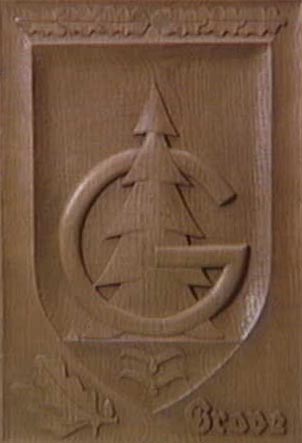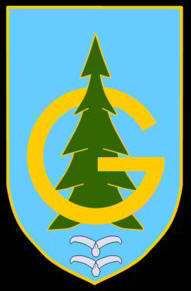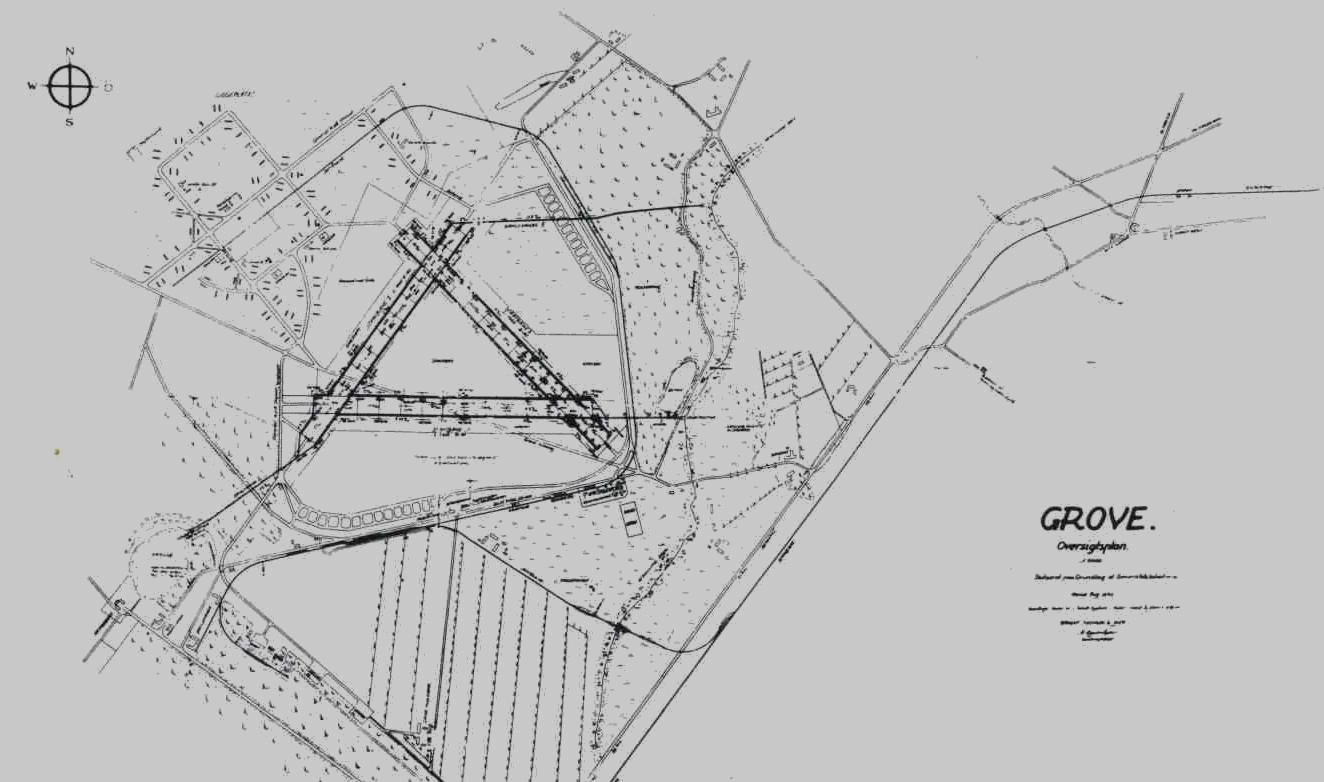Fliegerhorst Grove.


The crest of FlH Grove carved in a piece of oak.
A reconstruction based on Luftwaffe heraldic practice and color traditions.
Fliegerhorst Grove was built in the period APR - AUG 1940 and was declared operational 9 AUG 1940. Initially it was classified as an Einsatzhafen, but over time it was expanded both in area and facilities, later being classified as a Fliegerhorst. In 1944 a Northern Remote Dispersal Area was added and a similar Western one was under construction when the war ended. Also an extensive building program with St. and FA bunkers was initiated in 1943 and numerous weapons for ground defence were introduced so FlH Grove also became a Stützpunkt Gruppe. Recent research has established that FlH Grove and Aalb.-West must have been the most heavily fortified Luftwaffe airfields in Western Europe. Below is a list of the bunkers, which were built at Grove. The links below refer to a separate page with specific details.

Einsatzhafen Grove August 1940.
.jpg)
Fliegerhorst Grove, May 1945.
Bunkers
| DDCS |
Type |
# |
| T-10 | 622 mit Tobruk. | 34 |
| T-11 | 622 ohne Tobruk. | 4 |
| T-12 | 668. Kleinunterstand für 6 Mann. | 4 |
| T-13 | 646. Brunnenstand. | 1 |
| T-14 | 608. Batl.-, Abt.-, Reg.-Gefechtstand. | 2 |
| T-15 | 607. Munitionsunterstand II. | 2 |
| T-16 | L 413A. Munitionsunterstand für leichte Flakzug. | 2 |
| T-17 | L 411A. Unterstand für Flakscheinwerfer 60 cm. | 2 |
| T-18 | 621. Gruppenunterstand. | 7 |
| T-19 | 502. Doppeltgruppeunterstand | 3 |
| T-20 | L 410A. Unterstand ohne aufgesetzten Geschützstand 2/3.7 cm Flak mit Zugbefehlsstelle. | 2 |
| T-21 | 639. Grosser Sanitätsunterstand. | 2 |
| T-23 | L 408A. Unterstand für Abteilungsgefechtstand. | 1 |
| T-24 | L 416A. Schartenstand für 8,8 cm Flak. | 3 |
| T-25 | 681. MG Schartenstand ohne Nebenräume. | 1 |
| T-27 | 673 mod. Geschützunterstelraum II ohne Nebenräume. | 2 |
| T-48 | L 483. Unterstand für Funksendezentrale. | 1 |
| T-49 | L 489. Unterstand für Funksendestelle. | 1 |
| DDCS* | German name | # |
| T-22 | Gefechtsstand (Fliegerhorst). | 1 |
| T-26 | Type 70. | 4 |
| L 3/Type 67 (mod). | 3 | |
| T-28 | Luftschütz Unterstand für 50 mann. | 5 |
| T-29 | Geschütz Unterstand f. 7,6 cm Inf. Gesch. | 6 |
| T-30a | Muni.Unterstand, 7,6 cm Inf. Gesch. | 12 |
| T-30b | Ber.Raum, 7,6 cm Inf. Gesch. | 6 |
| T-31 | Type 58c, 60 cm & small room. | 39 |
| T-32 | Splitterschutzzelle. | 2 |
| T-33 | Bereitschaftsraum. | 13 |
| T-56 | Kühlbunker. | 18 |
| T-57 | FA, name unknown. | 1 |
| T-58 | Sanitätsunterstand. | 1 |
| T-59 | Luftschütz Unterstand für 30 mann. | 1 |
| T-60 | Unterstand für Ladeaggregat. | 1 |
| T-61 | Telefonzentrale. | 1 |
|
DDCS: Danish Defence Construction Service drawing number. |
||